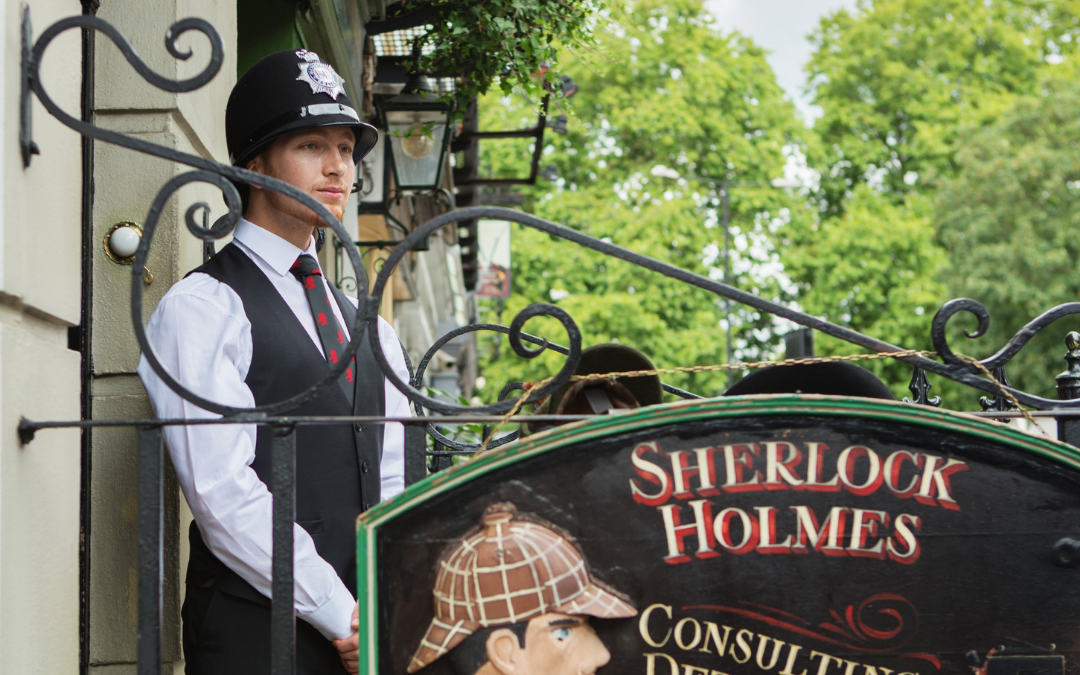Last year I threw together a list of 10 Tips for Aspiring Historical Fiction Authors. But to some extent or other, we’re all always aspiring, as I’ve never really known a writer who was satisfied. Now I’m back with ten more tips that might be helpful to you, or at least make you chuckle.
Here we go.
1. Think like a salesperson. If you’re writing the book of your heart because you want your mom and your kids to read it, and you don’t care if you only sell five copies, then ignore this tip. This is not for you. In fact, if you read this article, it will corrupt your soul. But if you’re aspiring to build a career in historical fiction, then you have to face an uncomfortable truth. Your book is a product. It’s a product you and/or your publisher have to sell. Which means that you have to start thinking about who your consumer is and what they want to buy. For example, I know that my audience is largely American. This means American-set historicals like America’s First Daughter have a built in reason for purchase. At least for now. There are trends in the market and I pay attention to them in deciding what to write. I still make sure that whatever subject I take on is one that I am passionate about. By all means, put aside a book if you’re not feeling it. But if you think like an artist and a salesperson, you can find the junction between your passion and what readers want.

2. All the rules of fiction still apply. I once had a vicious slap-fight with good friend and brilliant historical fiction author Kate Quinn in the Panera where we go to write together. The bone of contention was that I was trying to shape a character arc for my narrator–a queen of ancient Briton–and Kate had the audacity to tell me, “Don’t worry. It’s historical fiction. The history books will tell you what happens.” Well, if you’re a prodigy like Kate Quinn, you can take a look at a pile of research and magically divine character arc, motivation, pacing, dialog and theme. She does it by instinct. Blindfolded. With one hand tied behind her back. She actually applies all the rules of good fiction-telling without even thinking about it. But for the rest of us mere mortals it’s not so easy. Because historical fiction is not just what happened. That’s a biographer’s job. Historical fiction has all the same rules as every other kind of genre fiction, in that characters must change, pacing must be compelling, dialog must advance plot, there must be a plot, etcetera. That’s hard to do, because people’s real lives seldom fall into the neat shape of a plot arc. Now, you might be lucky. You might be writing about a historical figure or time period that already falls into a perfect plot arc. But just telling us what happened and how a character felt about it isn’t really a story. At least it’s not a good story. For that, you have to edit out the boring parts or combine them with fascinating things that keep the reader going. You have to take a hammer and chisel to the facts and give it a shape! Historical writers who don’t do this give us a bad name.

3. Immerse yourself in your time period. Most of what you need to write your historical book will come out in the things you specifically research for it. But just as often, tidbits that you hadn’t anticipated–amazing factoids you wouldn’t have even thought to look for–come to you when you’re not expecting them. If, that is, you are open to the opportunity. How do you open yourself to the opportunity? You immerse yourself in the time period. Go talk to re-enactors. Visit the locations if you can. Make photo collages. Watch every movie set in your era. Listen to music that would’ve been popular. Go to museums. Wear clothing or jewelry or make-up that your characters might have worn. Cook and eat food they would have served. You could even visit the History Channel. (Seriously, it’s not all Nazis, trucks and the apocalypse.) In short, act like a person obsessed. Your family and your neighbors will think you’re exceedingly strange, but your fellow historical authors will immediately recognize you as one of the tribe.

4. Footnote your manuscript. What? That’s crazy talk!! I know. I love footnotes and would use them without prejudice, but in American historical fiction, footnotes are highly frowned upon. They interrupt the reading experience, they create hassles in formatting, and they add pages (and therefore expense) to your book. So don’t include them in the book. But use them in your manuscript. Why? Because there will come a time, years down the road, when someone challenges you on something like, say, whether or not hippos are really dangerous creatures. And you can just open up your manuscript and find that resource. It also comes in super handy when you need to write up your acknowledgments page, provide a list of recommended reading, and/or give credit where credit is due.
5. Make a timeline. So, my co-author, Laura Kamoie, has a near photographic memory. Tell her a date and she can spit out what happened. Meanwhile, I can barely remember my own phone number, and yet, I have excellent relational memory. That is to say, I can remember what happened before what, and with what consequence to the history of the world. This is one of the many ways in which we complement one another. But combining our strengths to actually make a visual timeline of every relevant historical event in America’s First Daughter, not to mention the dates that letters were sent, that visitors arrived, that people moved in and out of Monticello…it helped us see a pattern that we had never seen before, and to our knowledge no one else has remarked upon. We realized, to be specific, that a forgotten founding father, William Short, was in proximity to Jefferson’s daughter at nearly every crisis in her life. That was a discovery that helped us shape a story. And it’s one of the reasons I’m a huge advocate of Aeon Timeline, which is one of the best $40 I ever spent. Making a timeline that you can refer back to while you write your historical fiction will not only help you see patterns and solve mysteries, but it will also help you avoid embarrassing errors.
6. Be Humble. Because whether you use a timeline program or not, you will make embarrassing errors. Maybe not a lot. Maybe not at all, at first. But it is inevitable that it will happen. Whether an impossible grey squirrel makes it into your manuscript or your publisher manages to insert a typo in production, things go wrong. It’s only the end of the world if you set yourself up as some infallible and insufferable pedant. If you do, readers will delight in calling you out on your mistakes–even if they aren’t mistakes. There’s always somebody out there who thinks they’re More Expert Than Thou and will downrate your book because of it, and you pretty much have to just suck it up. But you can complain about it quietly to your author friends. And if you’re generally humble, they’ll commiserate with you. But if you’ve been that guy at the party who refuses to read a book because an author used a non-preferred spelling of your favorite historical figure’s name, they will snigger behind your back and feed the trolls.

7. Make a blooper file. Once you accept that you are mortal, can make mistakes, and are more likely to make them when you have a production schedule of one historical book a year…you can salve your ego, and smooth ruffled feathers amongst your readers, by creating a blooper page where you admit your mistakes. Sharon Kay Penman has one. Kate Quinn has one. I have one. You can point and laugh. It’s okay. I have thick skin.

8. Develop thick skin. If they’re any good, your critique partners are going to tear your story up with notes and corrections. Your editor is going to suggest changes. Some readers are going to hate your book. They might even hate it in haiku. Sometimes it’ll make you laugh. Sometimes it’ll make you wanna smash stuff. But keep a stiff upper lip if you can, because if you can find any kernel of truth in the criticism, it’ll help make you a better writer. (And if you can’t, it’ll help you identify the readers you are reaching, and the feedback you can ignore.) I once received some amazing advice from James Patrick Kelly that a professional writer has to hold two entirely contradictory beliefs in their head at the same time. The first? That the story I have just written is absolutely brilliant and special and worthy of being shared with the world. The second? That the story I have just written is crap. Somewhere in the cognitive dissonance we can find confidence in the brilliant parts of our stories without being too smug to improve our craft.

9. Rewriting is where the art is. I’m a very slow writer when it comes to historical fiction. And recently, I had a very harrowing and educational experience in the writing of a story for my forthcoming continuity, A YEAR OF RAVENS. With my back up against the wall of an impossible deadline, I began a mad, frantic dash to complete my story in four days. And when it was done, I was sure it was so horrible that I didn’t think I could ever look my author friends in the eye again if they ever read it. All I felt was shame, shame, shame for that first draft. But then, in the editing, I realized that I had given myself a lot to work with. I’d used the wrong words here and there, a lot of details had to be fixed, but the basic structure was as sound as I could have made it. I don’t recommend this sort of trial by fire to anyone, and I’m not sure if I could replicate it, but remember that if your first draft is a disaster, you don’t have to bow down to the shame nun, because there’s always revisions.

10. Make historical author friends. Boy, you’re going to need them. And not just to help you tweet your new book releases. Writing can be an immensely lonely profession. Historical fiction writing even more so, because nobody else understands historical writers. We freak out at strange things. We go on researching rampages declaring that we must know the color of the hibiscus that flowered in ancient Algeria two-thousand years ago or we can never finish this book. (Just me?) There are things in our search history that would get us arrested if we did not have fellow historical author friends to defend us with a cry of, “She had to look up How To Kill A Small Child And Get Away With It for her story. I’ve read the Advanced Review Copy!” Only a historical author friend can both adore your twelve page exploration of the architecture of an ancient temple and still tell you how to cut it in half. And only another historical fiction author can understand the love and labor that goes into the books of our genre.

